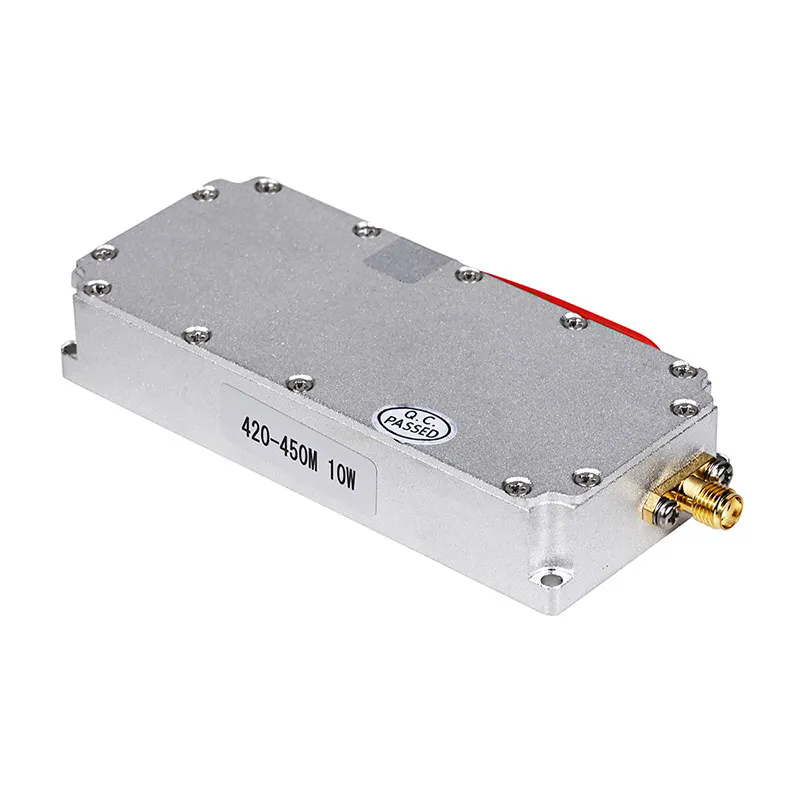Why Is an Anti-Drone Module Essential for Security in Today’s World?
2024-12-07
In a world increasingly influenced by technology, drones have become a popular tool for various purposes, from recreational use to commercial applications. However, as their usage grows, so does the need for effective countermeasures, especially when it comes to security. Anti-drone modules have emerged as essential tools in the fight against unwanted or malicious drones, but what exactly are they, and why are they becoming so crucial in today’s security landscape?
1. What Is an Anti-Drone Module?
An anti-drone module is a system designed to detect, track, and neutralize unwanted or rogue drones. These modules typically use a combination of radar, radio frequency (RF) jamming, and other detection technologies to identify and disrupt drones that pose a threat. Anti-drone systems can be deployed in a variety of environments, including airports, military bases, critical infrastructure, and public events, where drone threats are a growing concern.
The technology behind these systems varies, but many anti-drone modules focus on countermeasures like:
- Signal Jamming: Disrupting the communication between the drone and its operator.
- Spoofing: Sending false signals to the drone, causing it to behave in an unintended manner.
- Kinetic Interception: Using nets or projectiles to physically capture or disable the drone.
2. Why Is an Anti-Drone Module Important for Security?
As drones become more accessible and capable, they also pose a growing security threat. Here’s why anti-drone modules are so essential:
- Protection of Critical Infrastructure: Drones have the potential to interfere with airports, military installations, power plants, and other vital facilities. An anti-drone system ensures that such areas remain secure and operational.
- Safety in Public Events: Large public gatherings, such as concerts, sports events, and political rallies, are increasingly vulnerable to unauthorized drone activity. Anti-drone modules can prevent drones from disrupting these events or causing harm.
- Preventing Smuggling and Surveillance: Drones can be used for illegal activities such as smuggling contraband across borders or gathering intelligence. Anti-drone systems can help authorities track and neutralize these threats.
- Protecting Privacy: Drones equipped with cameras can intrude on personal privacy by flying over private properties. Anti-drone modules help maintain the privacy and safety of individuals and businesses.
3. How Do Anti-Drone Modules Work?
Anti-drone systems use a multi-layered approach to detect and neutralize drones:
- Detection: The first step in neutralizing a drone is detection. Anti-drone modules use radar, infrared sensors, cameras, and radio frequency (RF) scanners to detect drones within a specific range.
- Tracking: Once a drone is detected, the system begins tracking its movement. The data collected helps security teams determine the drone’s location, flight path, and the potential threat it poses.
- Neutralization: After identifying a threat, anti-drone systems employ countermeasures such as jamming or spoofing the drone’s communication signals, effectively taking control or forcing the drone to land. In more advanced systems, physical interception devices like nets or drones can be deployed to neutralize the threat.
4. What Are the Different Types of Anti-Drone Modules?
Anti-drone systems come in a variety of forms, each designed to address specific security concerns. Some of the most common types include:
- RF Jamming Systems: These modules disrupt the communication link between the drone and its operator, causing the drone to lose control or return to its home location.
- Radar and Radio Frequency Detection: These systems use radar and RF signals to detect drones in the air, providing early warning of potential threats.
- Kinetic Interception Systems: These systems deploy physical barriers such as nets, drones, or projectiles to capture or disable drones that are too close or unresponsive to other countermeasures.
- Laser Systems: Laser-based systems target and disable drones by overheating their sensitive components, such as cameras or motors.
- Drone-Specific Countermeasures: Some anti-drone modules use drones themselves to intercept rogue drones. These counter-drones are equipped with nets or other devices designed to capture the target drone mid-flight.
5. Where Are Anti-Drone Modules Used?
Anti-drone modules are used in various sectors and settings to protect people, property, and operations from the dangers posed by drones:
- Military and Defense: Military bases and operations are prime targets for enemy drones, which can be used for surveillance or even weapon delivery. Anti-drone modules help neutralize these threats before they reach sensitive areas.
- Airports: Drones near airports can disrupt flight schedules and pose a hazard to aircraft. Anti-drone systems are increasingly being deployed around airports to ensure safe air traffic management.
- Public Events: In crowded public venues, such as sports stadiums or music festivals, drones can pose a risk to safety. Anti-drone systems ensure that these events are protected from aerial intruders.
- Critical Infrastructure: Energy facilities, data centers, and government buildings require protection from unauthorized drone activity. Anti-drone technology offers a safeguard against espionage, sabotage, or other forms of interference.
6. How Effective Are Anti-Drone Modules?
The effectiveness of anti-drone modules largely depends on the technology used, the environment in which they are deployed, and the sophistication of the drones being targeted. While most systems can handle common consumer drones, more advanced or military-grade drones may require more sophisticated countermeasures. Nevertheless, as drone technology evolves, so too do anti-drone systems, making them increasingly reliable in neutralizing various threats.
Conclusion
As drones continue to proliferate and their capabilities evolve, the need for anti-drone modules has become critical in maintaining security and safety. Whether used for protecting sensitive infrastructure, ensuring public event security, or preventing surveillance and smuggling activities, these systems play an important role in modern security strategies. With the rising prevalence of drones, investing in anti-drone technology is no longer a luxury—it’s a necessity to stay ahead of potential threats.



